Canada and USA
Literary Notes: “Rope Burns” and “Dangerous”

by Thomas Hauser
In 1998, Ian Probert authored a book entitled Rope Burns that took readers on an autobiographical journey through the prism of boxing.
Probert had dabbled with being an artist and film-maker. There was a time when he worked the beat as a boxing writer. Eighteen years ago in Rope Burns, he wrote, “Ultimately, I left boxing because it was a world that I never really felt part of. Although it was easy to fall under the spell of these young men who tortured their bodies and battled each other for the right to put their hands on the most temporary of prizes, there was a large portion of me that knew that what I was witnessing was wrong.”
Thereafter, Probert’s journey was marked by hypothyroidism that, before it was diagnosed, rendered him morbidly obese and barely able to walk. There were periods in his life when he drank too much. He was depressed and, in his words, “lay in bed, night after night, trying to work out how I could die in a way that would cause the least distress to my wife and daughter.”
Two decades after walking away from boxing, Probert was sucked back in. Dangerous, published this year by Pitch Publishing, picks up where Rope Burns left off. Pitch has also reissued Rope Burns with a new foreword and postscript by the author.
“What am I doing here among the broken noses and bulging scar tissue and calloused hands and knotted brows?” Probert asks in Dangerous. “I said goodbye to this a long time ago and tried not to look behind me. I suppose a comeback of sorts was always inevitable. I’m older, of course, not remotely wiser, and my stamina is shot to pieces. Sounds like an ideal time to try and do something that you used to do years ago but abandoned because you couldn’t handle it anymore. Ring any bells, anyone?”
Dangerous recounts Probert’s recent reunion with Michael Watson (who was beaten into a coma by Chris Eubank in 1991), Kellie Maloney (often referred to by the boxing media as “the former Frank Maloney”), Herol Graham, Nigel Benn, Alan Minter, and others. But it isn’t a book about boxing. Like Rope Burns, it’s primarily a book about Probert and how boxing has impacted upon his life.
“Ninety-nine-point-nine percent of the time, boxing keeps a discreet distance from me,” he writes. “And I try to keep as far away from it as circumstances permit. Boxing lets me get on with my life and, for a while, I even forget that it exists. But every now and then, it leaps out at me and catches me unawares.”
Probert’s insights into the sport and business of boxing are, for the most part, solid. That’s not to say that all is right with Rope Burns and Dangerous. At one point, Probert opines, “For a fight to be considered a truly great fight, it must be resolved with a knockout.” Those who remember Ali-Frazier I and Gatti-Ward I would take issue with that view. And there are several places where Probert mischaracterizes the historical record.
That said; Probert’s work is thought-provoking and well-written as evidenced by the following quotes:
- “What exactly is a ‘boxing man?’ At its simplest level, it’s a term often utilized by those who work within the sport to describe those who work within the sport. To be nominated a ‘boxing man’ signifies entry into an exclusive club whose membership, while comprising some of the richest and most powerful people in the world, finds room to incorporate a number of the saddest, most desperate examples of humanity that you will ever come across. All of these people have one thing in common. From the journalists who make their living writing about the exploits of boxers to the numerous courtiers with which a professional boxer will surround himself, they are all liars.”
- “Boxers are often perceived by the public as ignorant thugs who just happen to be good at fighting. In reality, the majority of boxers possess a refined form of intelligence that only those who study the sport can even begin to understand. I can honestly say that I have never met an unintelligent boxer. I have come across many who would struggle with quantum mechanics. I have also met some who would have difficulty reciting their six-times table. But I have never been in the presence of a fighter who could in any way be described as stupid. Boxers are decision makers. They are trained to reach a conclusion at speeds that would be impossible for the likes of you and I. When a boxer makes a decision, he must commit to it instantly and prepare to suffer the consequences of his actions. Moreover, the decisions that they are compelled to make are often life transforming.”
- “The next time you happen to be watching a fight on television, take a look at the faces of the two men involved. If the one with the cauliflower ears and the broken nose and the heavily-scarred eyebrows looks tough to you, think again before you attempt to pick a winner. He got those cauliflower ears and that broken nose and those heavily-scarred eyebrows because people keep hitting him around those places. It’s the pretty one that you should be putting your money on.”
- “Boxing has been around in various forms since the ancient Greeks. And nobody has ever been able to find a way of stopping people from doing it; not that anybody has really wanted to. But where do you draw the line? My feelings are ambiguous. I’m one hundred percent sure that I don’t want people to get fatally injured for my enjoyment. You’d have to be a psychopath to enjoy that. I get no pleasure from seeing these people bleeding, and I get no pleasure from seeing them sustain a broken nose. But I also know that the spectacle of two men standing before you, aiming punches at each other until one of them falls to the floor unconscious can be one of the most exciting things that you will ever bear witness to in life. And perversely – and I don’t want to say this – I enjoy watching people get knocked out.”
- “Now it’s time to cut to the chase. Boxing is wrong. There, I’ve said it. There can be no place in a civilized society for an activity provided exclusively for the entertainment of the masses which places its main protagonists in clear danger of losing their lives. I am aware of all the counter-arguments. I have employed them myself on far too many occasions. I know that nobody is forcing the boxers to climb into the ring and hit each other. I know too that boxing has allowed many people to live a life that would have been unthinkable were it not for their ability to hit other people accurately and hard. However valid these arguments might appear, they fall flat on their faces when a boxer loses his life. There is simply no way that this can be defended.”
- “When I said that there can be no place in a civilized society for an activity such as boxing, I meant every word. What I didn’t say was that it should be banned. Yes, in an ideal world, boxing should be consigned to the trash can that contains the remnants of other equally abhorrent pastimes such as badger baiting, bullfighting, and seal culling. Yet I would suggest that, before society elects to make an example of boxing, there are plenty of other things that it should be worrying about. Prior to ridding itself of the sport that is not a sport, which gives us all a glimpse of our species’ most primitive and primal urges, society could turn its attention to more pressing and immediate problems.”
The emotional climax of Probert’s journey comes at the end of Dangerous. Talking about sessions with his therapist, Probert confides to the reader, “I seem to slip boxing into the conversation more than is healthy or coincidental.”
Why is he doing that?
It has to do with the man Probert describes as “my nasty and abusive deceased father.”
“So I do what I have to do,” Probert writes. “I go and see my mother. I’ve seen her only once since my father’s funeral two years ago. I turn up unannounced on a warm Saturday morning, which obviously shocks her. I’ve never done this before. ‘What are you doing here?’ she asks. For the first time ever, I tell my mother everything. I’m not going to go into detail here. Suffice it to say, he was a monster. A monster who ruled by fear – psychological and physical – when I was a child. And more of a monster when I became a teenager, who did things to me when we were alone that a father should never do to a son. A demon who stole my childhood from me in a manner that I’ve never really been able to get over. I spill out all the lurid details. Her face remains expressionless as she listens. She calls him a bastard. She says that she hates him. She says it like he’s still alive. She asks me why I never told her it was happening. I tell her that I tried to. At least, I think I tried to. ‘Well, you should have tried harder,’ she says, too coldly, too callously.”
“And yet,” Probert concedes, “in spite of all this, I wanted him to be proud of me.”
Probert’s father loved boxing.
“It’s absurd the lengths to which one will go to earn a father’s approval,” Probert confesses. “Even one who brutalized you. In retrospect, it’s certainly no accident that I ended up jettisoning the career in the arts that I’d always coveted and became a boxing writer. Even though I could never admit it to myself, it’s clear that I did it for him. I did it because a part of me wanted him to be impressed by something that I had achieved. And I was prepared to mould my entire life around this silly objective.”
That’s not as unusual as one might think. Probert’s writing brought back the memory of a sitdown I had years ago with Randy Neumann.
Neumann was a heavyweight contender in the 1970s, best known for a bloody ring trilogy with Chuck Wepner and a decision triumph over Jimmy Young. After retiring as an active fighter, he refereed more than three hundred bouts. More significantly perhaps, he graduated from college and went on to build a successful career as a financial planner.
I asked Neumann why he became a professional fighter, and he began by telling me about his parents.
“My father was a scholar-athlete and my mother was an incredibly beautiful woman,” he recalled. “They could have been the king and queen at any high school senior prom. But my father was a tragedy of World War II. He was in the Air Force. He saw a lot of his friends killed. After he came back from the war, he had a nervous breakdown. When I was five years old, he moved away from home. My mother was a tough independent woman. She never remarried. Instead, she went to work as a model and earned enough money to raise my sister and me well.”
Then Neumann broke into tears.
“I didn’t know it at the time,” he said. “But I was looking for the hardest thing I could do this side of the law to prove to a father who had left me that I was tough.”
Thomas Hauser can be reached by email at thauser@rcn.com. His most recent book – A Hard World: An Inside Look at Another Year in Boxing – was published by the University of Arkansas Press. In 2004, the Boxing Writers Association of America honored Hauser with the Nat Fleischer Award for career excellence in boxing journalism.
Argentina
The BWAA Shames Veteran Referee Laurence Cole and Two Nebraska Judges
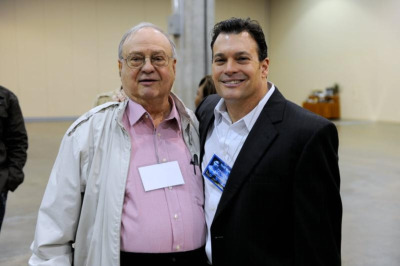
In an unprecedented development, the Boxing Writers Association of America has started a “watch list” to lift the curtain on ring officials who have “screwed up.” Veteran Texas referee Laurence Cole and Nebraska judges Mike Contreras and Jeff Sinnett have the unwelcome distinction of being the first “honorees.”
“Boxing is a sport where judges and referees are rarely held accountable for poor performances that unfairly change the course of a fighter’s career and, in some instances, endanger lives,” says the BWAA in a preamble to the new feature. Hence the watch list, which is designed to “call attention to ‘egregious’ errors in scoring by judges and unacceptable conduct by referees.”
Contreras and Sinnett, residents of Omaha, were singled out for their scorecards in the match between lightweights Thomas Mattice and Zhora Hamazaryan, an eight round contest staged at the WinnaVegas Casino in Sloan, Iowa on July 20. They both scored the fight 76-75 for Mattice, enabling the Ohio fighter to keep his undefeated record intact via a split decision.
Although Mattice vs. Hamazaryan was a supporting bout, it aired live on ShoBox. Analyst Steve Farhood, who was been with ShoBox since the inception of the series in 2001, called it one of the worst decisions he had ever seen. Lead announcer Barry Tompkins went further, calling it the worst decision he has seen in his 40 years of covering the sport.
Laurence Cole (pictured alongside his father) was singled out for his behavior as the third man in the ring for the fight between Regis Prograis and Juan Jose Velasco at the Lakefront Arena in New Orleans on July 14. The bout was televised live on ESPN.
In his rationale for calling out Cole, BWAA prexy Joseph Santoliquito leaned heavily on Thomas Hauser’s critique of Cole’s performance in The Sweet Science. “Velasco fought courageously and as well as he could,” noted Hauser. “But at the end of round seven he was a thoroughly beaten fighter.”
His chief second bullied him into coming out for another round. Forty-five seconds into round eight, after being knocked down for a third time, Velasco spit out his mouthpiece and indicated to Cole that he was finished. But Cole insisted that the match continue and then, after another knockdown that he ruled a slip, let it continue for another 35 seconds before Velasco’s corner mercifully threw in the towel.
Controversy has dogged Laurence Cole for well over a decade.
Cole was the third man in the ring for the Nov. 25, 2006 bout in Hildalgo, Texas, between Juan Manuel Marquez and Jimrex Jaca. In the fifth round, Marquez sustained a cut on his forehead from an accidental head butt. In round eight, another accidental head butt widened and deepened the gash. As Marquez was being examined by the ring doctor, Cole informed Marquez that he was ahead on the scorecards, volunteering this information while holding his hand over his HBO wireless mike. The inference was that Marquez was free to quit right then without tarnishing his record. (Marquez elected to continue and stopped Jaca in the next round.)
This was improper. For this indiscretion, Cole was prohibited from working a significant fight in Texas for the next six months.
More recently, Cole worked the 2014 fight between Vasyl Lomachenko and Orlando Salido at the San Antonio Alamodome. During the fight, Salido made a mockery of the Queensberry rules for which he received no point deductions and only one warning. Cole’s performance, said Matt McGrain, was “astonishingly bad,” an opinion echoed by many other boxing writers. And one could site numerous other incidents where Cole’s performance came under scrutiny.
Laurence Cole is the son of Richard “Dickie” Cole. The elder Cole, now 87 years old, served 21 years as head of the Texas Department of Combat Sports Regulation before stepping down on April 30, 2014. At various times during his tenure, Dickie Cole held high executive posts with the World Boxing Council and North American Boxing Federation. He was the first and only inductee into the inaugural class of the Texas Boxing Hall of Fame, an organization founded by El Paso promoter Lester Bedford in 2015.
From an administrative standpoint, boxing in Texas during the reign of Dickie Cole was frequently described in terms befitting a banana republic. Whenever there was a big fight in the Lone Star State, his son was the favorite to draw the coveted refereeing assignment.
Boxing is a sideline for Laurence Cole who runs an independent insurance agency in Dallas. By law in Texas (and in most other states), a boxing promoter must purchase insurance to cover medical costs in the event that one or more of the fighters on his show is seriously injured. Cole’s agency is purportedly in the top two nationally in writing these policies. Make of that what you will.
Complaints of ineptitude, says the WBAA, will be evaluated by a “rotating committee of select BWAA members and respected boxing experts.” In subsequent years, says the press release, the watch list will be published quarterly in the months of April, August, and December (must be the new math).
Check out more boxing news on video at The Boxing Channel
Canada and USA
The Avila Perspective, Chapter 8: Competing Cards in N.Y. and L.A.
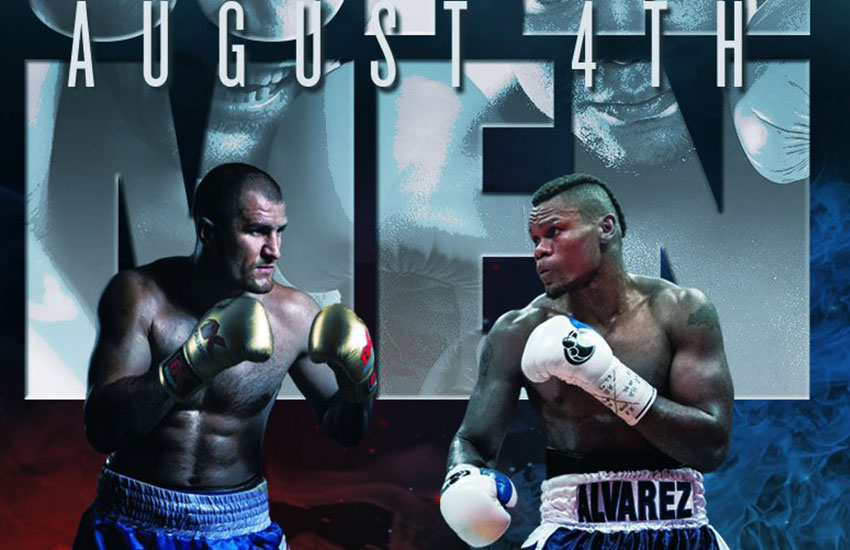
Rival boxing shows compete this Saturday as light heavyweight world titlists are featured in New Jersey while former world champion welterweights and middleweights tangle in New York.
A mere 150 miles separate the two fight cards staged in Uniondale, N.Y. and Atlantic City.
But there’s no mercy inside the boxing ring and certainly no mercy between boxing promotions. While Main Events stages WBO light heavyweight titlist Sergey Kovalev and WBA light heavyweight titlist Dmitry Bivol in separate bouts, DiBella Entertainment stacks former champs Andre Berto against Devon Alexander in a welterweight clash.
Take your pick.
Russia’s Kovalev (32-2-1, 28 KOs) has lost some luster and hopes to reboot his popularity with a win against Canada’s Eleider Alvarez (23-0, 11 KOs). But he will be directly competing against WBA champ Bivol (13-0, 11 KOs), also of Russia, who defends against Isaac Chilemba (25-5-2) of South Africa.
HBO will televise both light heavyweight title fights.
Bivol, 27, has slowly, almost glacier-like slow, picked up fans along the way by training in Southern California. The quiet unassuming fighter with a conservative style and cobra-like quickness appeals to the fans.
“I do not think that now I am the best light heavyweight, but I am now one of the best. One of four guys,” said Bivol during a press conference call. “But I hope in not the far future, we will know who is the best.”
That, of course, would mean a date with Kovalev should both fighters win on Saturday. Nothing is certain.
Kovalev, now 35, has lost some of that fear factor aura since losing back-to-back fights to now retired Andre Ward. Though he’s cracked two opponents in succession by knockout, many are pointing to the potential showdown with Bivol as the moment of truth.
“Most likely this fight is gonna happen since both Sergey and I are HBO boxers and as long as that’s what the people want, most likely the fight will happen,” said Bivol. “Me and Sergey will make sure to give this fight to the people.”
It’s time for the build-up and it starts on Saturday Aug. 4, on HBO.
“That’s certainly a goal of Sergey’s and he’s made it very clear to me that that’s what he wants to do,” said promoter Kathy Duva, CEO of Main Events. “He wants to do unification fights if he is successful with Eleider Alvarez. That’s what he wants to do next; he’s been very clear about that.”
DiBella
Five former world champions stack the fight card at Nassau Coliseum in Uniondale, New York.
Former welterweight world champs Andre Berto (31-5, 24 KOs) and Devon Alexander (27-4-1, 14 KOs) lead the charge in a 12-round clash. FOX will televise the main event and others at 4 p.m. PT/7 p.m. ET.
Berto, 34, has been fighting once a year so it’s difficult to determine if age has crept into his reflexes. When he knocked out Victor Ortiz in a rematch two years ago Berto looked sharp and dangerous. But against Shawn Porter a year ago, the crispness seemed gone and he quickly lost by knockout.
Alexander, 31, has the advantage of being a southpaw. But he always seems to do the minimum when he fights. Last February he slowed down and allowed Victor Ortiz to steal the fight. All the commotion by the announcers was for naught. Defense does not win fights, it allows you to win fights. The lack of offense in the latter rounds cost Alexander a win in a match that entered the books as a majority draw.
It’s a curious matchup of former world champions.
Peter “Kid Chocolate” Quillin (33-1-1, 23 KOs) the former WBO middleweight titlist meets J’Leon Love (24-1-1, 13 KOs) in a super middleweight bout set for 10 rounds. It’s another intriguing fight especially between two fighters with great personalities.
Quillin, 35, was ambushed by Daniel Jacobs in the first round a year ago in losing the title. Was it bad luck, age or both? As a fighter the Brooklyn-based prizefighter has a ton of followers who like him as a person. Few are as classy as Quillin.
Love, 30, has long been a mainstay in Las Vegas and since his amateur days his abilities have been touted. Throughout the years Love has shown that charm and friendliness can go a long ways, even in the bitter wars of prizefighting. But the time has come to see if he belongs in the prizefighting world. Quillin will present an immense challenge for Love.
A number of other interesting fights are slated to take place among former world champions including Sergey Lipinets who lost the super lightweight title to Mikey Garcia this past winter. There’s also Luis Collazo in a welterweight match.
One world title fight does take place on the card.
Female WBA super middleweight titlist Alicia Napoleon (9-1) makes the first defense of her title against Scotland’s Hannah Rankin (5-1). It’s a 10 round bout and the first time Napoleon defends the title since winning it last March against Germany’s Femke Hermans. Ironically, Hermans now has the WBO super middleweight title after defeating former champ Nikki Adler by decision this past May.
L.A. Congestion
Next week the city of Angels will be packed with three fight cards in four days.
First, on Wednesday Aug. 8, 360 Promotions stages Abraham Lopez (9-1-1, 3 KOs) versus Gloferson Ortizo (12-0-1, 6 KOs) in the main event at the Avalon Theater in Hollywood, Calif. This is Filipino fighter Ortizo’s ninth fight this year. You read that correctly.
All of Ortizo’s fights have taken place across the border in Tijuana. The 32-year-old now returns to California against another Californian in Lopez. He’ll be looking for his fourth consecutive knockout, but Lopez, 22, has not lost a fight since his pro debut. Inactivity might come into play for Lopez who hasn’t stepped in the boxing ring in over a year.
New York’s Brian Ceballo (3-0) returns in a six round welterweight bout against local fighter Tavorus Teague (5-20-4). Ceballo, who is promoted by 360 Promotions, looked good in his last appearance. The amateurish punches seen in his first two bouts were gone by his third pro fight. His opponent Teague has ability and can give problems if Ceballo takes his foot off the pedal.
One of Gennady “GGG” Golovkin’s training partners Ali Akhmedov (11-0, 8 KOs) makes his California debut when he meets Jorge Escalante (9-1-1, 6 KOs) in a light heavyweight match.
Female super lightweight Elvina White (2-0) is also slated to compete. The entire fight card will be streamed at www.360promotions.us and on the 360 Promotions page on Facebook. First bell rings at 6:15 p.m.
Belasco Theater in downtown L.A. is the site of Golden Boy Promotions fight card on Friday Aug. 10. A pair of young prospects will be severely tested.
San Diego’s Genaro Gamez (8-0, 5 KOs) meets Filipino fighter Recky Dulay (10-3, 7 KOs) for the vacant NABF super featherweight title. For Dulay it’s always kill or be killed. Five of his last fights have ended in knockout wins or losses.
Gamez, 23, seems to thrive under pressure and broke down two veterans in back-to-back fights at Fantasy Springs Casino. Now he returns to the Belasco, a venue where he has struggled in the past. But this time he’s the main event.
Another being severely tested will be Emilio Sanchez (15-1, 10 KOs) facing veteran Christopher Martin (30-10-3, 10 KOs) who is capable of beating anyone.
Sanchez, 24, lost by knockout in his last fight this past March. He’s talented and fearless and one mistake cost him his first loss as a pro. He’s not getting a break against Martin, a cagey fighter who has upset many young rising prospects in the past. Martin also has experience against world champions. It’s an extremely tough matchup for Sanchez.
The fight card will be televised by Estrella TV beginning at 6 p.m.
World Title Fight
On Saturday, boxing returns to the Avalon Theater in Hollywood.
The main event is a good one as Puerto Rico’s Jesus Rojas (26-1-2, 19 KOs) defends the WBA featherweight world title against Southern California’s Jojo Diaz (26-1) in a 12 round clash. It’s power versus speed.
Rojas, 31, is one tough customer. When he took the interim title against Claudia Marrero last year he chased down the speedy southpaw Dominican and blasted him out in the seventh round. Several months earlier he obliterated another Golden Boy prospect, Abraham Lopez (not the same Abraham Lopez that is fighting on the 360 Promotions card), in eight rounds. Now he has the title and defends against the speedy southpaw Diaz.
Diaz, 25, just recently lost a bid for the WBC featherweight title against Gary Russell Jr. Though he lost by decision three months ago, that fight might be easy in comparison to this challenge against Rojas.
The former Olympian won’t be able to take a breath against the Puerto Rican slugger who is about as rough as they come.
Two more undefeated Golden Boy prospects get a chance to eliminate each other when Philadelphia’s Damon Allen (15-0-1) meets East L.A.’s Jonathan Navarro (14-0, 7 KOs) in a super lightweight fight set for 10 rounds.
Phillie versus East LA is like fire versus fire in the boxing ring. Boxers originating from those two hard-bitten areas usually have go-for-broke styles that result in pure action. Allen versus Navarro should not disappoint.
Allen, 25, is not a hard puncher but he’s aggressive and like most Philadelphia fighters, he’s not afraid to mix it up.
Navarro, 21, lives in East L.A. but trains in Riverside under Robert Garcia. He’s slowly finding his timing and will be facing the fastest fighter since his pro debut in 2015.
Others featured on the card will be Hector Tanajara, Aaron McKenna and Ferdinand Kerobyan.
The card will be streamed on the Golden Boy Fight Night page on Facebook beginning at 6 p.m.
Check out more boxing news on video at The Boxing Channel
Canada and USA
What’s Next for Manny Pacquiao?
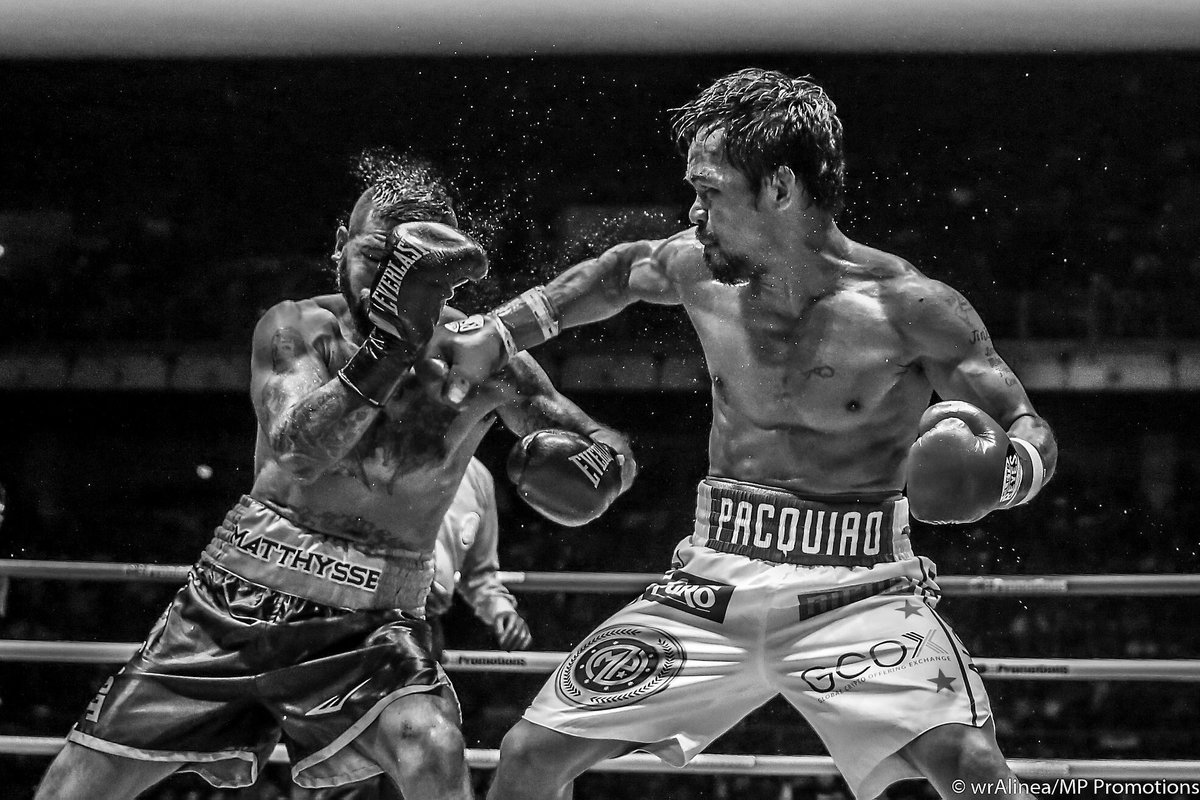
Manny Pacquiao isn’t quite ready to retire, and more big-money fights against high-level competition seem to be on the 39-year-old’s way.
“I feel like I’m a 27-year-old,” Pacquiao told GMAnetwork.com’s Jamil Santos last week. “Expect more fights to come.”
Pacquiao (60-7-2, 39 KOs) looked exceptionally sharp in his seventh-round knockout win over former junior welterweight titleholder Lucas Matthysse on July 15 at Axiata Arena in Kuala Lumpur, Malaysia. It was Pacquiao’s best performance in at least four years, netting Pacquiao a secondary world title at welterweight along with a slew of renewed public interest in the boxing superstar’s career.
But what comes next for the only fighter in the history of boxing to capture world titles in eight different weight classes? TSS takes a detailed look at the potential opponents for one of the sport’s most celebrated stars.
Cream of the Crop
Pacquiao looked good enough against Matthysse to suggest he’d make a viable candidate to face either Terence Crawford or Vasyl Lomachenko next. Crawford is ranked No. 2 on the Transnational Boxing Rankings Board’s pound-for-pound list while Lomachenko slots at No. 1.
While Pacquiao is no longer under contract with longtime promoter Bob Arum at Top Rank, most industry insiders expect he will continue working with Arum’s team in some capacity so long as his career keeps moving forward. Pacquiao started his own promotional venture, MP Promotions, to co-promote the Matthysse bout with Oscar De La Hoya, but Top Rank was still involved in the fight which is why the bout ended up streaming on ESPN+.
Top Rank’s two hottest commodities at the present are Ring Magazine and WBA lightweight champ Lomachenko and welterweight titlist Crawford. Both are highly-regarded, multi-division world titleholders in the primes of their careers who are universally considered the top fighters in boxing.
Lomachenko and Crawford would each present a unique set of problems for Pacquiao stylistically. Of the two, Pacquiao probably matches up best with Lomachenko at this point in his career. Crawford (33-0, 24 KOs) is much larger and heavier than both Pacquiao and Lomachenko, and unless Pacquiao just really wants to test himself against someone incredibly dangerous, it’d probably be best for Team Pacquiao to avoid fighting Crawford at all costs. Crawford would be a heavy favorite against Pacquiao and most boxing insiders don’t believe this version of Pacquiao could compete with Crawford.
Lomachenko (11-1, 9 KOs) is naturally smaller than Pacquiao and has never fought above 135 pounds. If Pacquiao could lure Lomachenko to 140 pounds or above, he’d find himself in a winnable fight against a top-notch opponent. Lomachenko would probably be the slight favorite based on age alone but Pacquiao’s power and athleticism would give him a realistic chance to pull the upset.
Other Notable Possibilities
Former junior welterweight titleholder Amir Khan has long been angling for a bout against Pacquiao. Khan faces Samuel Vargas on Sept. 8 in another comeback bout against lower level competition. Khan (32-4, 20 KOs) bravely moved up to middleweight to fight Canelo Alvarez in 2016 but was knocked out in the sixth round. He left the sport for a spell but returned to boxing in February as a welterweight with a sensational first round knockout win over Phil Lo Greco. A win over Vargas puts Khan in good position to secure a bout with Pacquiao, and the fight is a reasonable move by both camps. Pacquiao would probably be the heavy favorite, but Khan’s speed and long reach give him a decent chance to pull the upset.
Former welterweight titleholder Jeff Horn won a controversial decision over Pacquiao last year in Australia. The bout grabbed huge ratings for ESPN and there have been many debates since it happened as to which fighter truly deserved the nod from the judges. Horn (18-1-1, 12 KOs) doesn’t possess elite level talent, but he’s huge compared to Pacquiao and fights with such ferocity that the two can’t help but make an aesthetically pleasing fight together. Pacquiao would be the heavy favorite to defeat Horn if the two fight again.
Pacquiao vs. PBC fighters?
Boxing’s current political climate and the ongoing battle of promoters and television networks for the hearts and minds of boxing fans usually leaves many compelling fights between top level stars off the table. Fighters promoted by Top Rank and Golden Boy are almost never able to secure bouts with fighters signed to Al Haymon to appear under the Premier Boxing Champions banner and vice versa. But Pacquiao’s free agent status opens up new and interesting possibilities for the fighter to pursue noteworthy PBC fighters.
There had been lots of chatter about Pacquiao facing Mikey Garcia next. Garcia (39-0, 30 KOs) has been decimating competition at both lightweight and junior welterweight. Garcia is considered by most experts to be one of the top 10 pound-for-pound fighters in the sport. He’s the TBRB junior welterweight champion and a unified lightweight titleholder (WBC, IBF). While Garcia is hoping to land a big money bout against IBF welterweight titleholder Errol Spence, most boxing experts believe the jump up to 147 pounds would be too much for the diminutive Garcia who began his career at featherweight. A better welterweight target for Garcia would be Pacquiao who also began his career in a much lower weight class.
Spence (24-0, 21 KOs) is probably the best of the PBC welterweights. He’s considered by many to be on par with Crawford at 147 so it would be an incredibly dangerous bout for Pacquiao to go after at this point in his career. But Spence is aggressive and fights in a style that Pacquiao traditionally matches up very well against. Spence would be the favorite based on size, age and skill.
Slightly less dangerous to Pacquiao would be facing the winner of the Sept. 8 battle between Danny Garcia and Shawn Porter. Garcia (34-1, 20 KOs) and Porter (28-2-1, 17 KOs) are fighting for the vacant WBC welterweight title and the possibility of capturing another world title in his career could sway Pacquiao to seek out the winner. Pacquiao could find himself a slight favorite or underdog depending on which of the two fighters he would face, but both would be winnable fights.
The WBA welterweight champion is Keith Thurman. Thurman (28-0, 22 KOs) is a good boxer with tremendous power but Pacquiao’s speed and athleticism would probably give him the leg up in that potential matchup. Thurman hasn’t fought in over 16 months though and recent pictures suggest he’s not in fighting shape at the moment, so the likelihood of a Pacquiao vs. Thurman fight is pretty much nil.
Some fans want Pacquiao to face Adrien Broner. Broner (33-3-1, 24 KOs) is a solid contender at 147 but probably doesn’t have the skill to seriously compete with Pacquiao. Pacquiao would be a significant favorite and would likely stop Broner if the two were able to meet in a boxing ring.
Mayweather-Pacquiao 2?
Pacquiao lost a unanimous decision to Floyd Mayweather Jr. in 2015, but the circumstances surrounding the fight, and the fact it was the biggest box office bash in the history of the sport, have led many to suspect the two fighters would meet again in a rematch.
Yes, Mayweather (50-0, 27 KOs) is retired, but he’s unretired several times in his career for big money fights including last year’s crossover megafight with UFC star Conor McGregor. While it seems unlikely to happen, Mayweather-Pacquiao 2 would still be a huge worldwide event worth millions of dollars to both fighters so those following the sport can never say never to the idea of it happening again.
While Mayweather is 41, he’d still get the nod as the betting favorite should he fight Pacquiao again based on what happened in the first fight as well as his stylistic advantage over Pacquiao.
Pacquiao vs. McGregor?
McGregor’s bout against Mayweather last year was such a financial success and the MMA star made so much more money in the boxing ring than he did as a UFC fighter that the idea of him returning to the sport to face Pacquiao isn’t as far-fetched as one might think.
Pacquiao vs. McGregor would be an easy sell to the general public. According to CompuBox, McGregor landed more punches against Mayweather than did Pacquiao, and the general consensus is that Mayweather-McGregor was more fun to watch than Mayweather-Pacquiao.
The size difference between the two would lead to an easy promotion. McGregor is a junior middleweight and Pacquiao has only competed at the weight once back in 2010. Despite all that, Pacquiao would be a significant favorite to defeat McGregor and rightly so. He’s too fast and too good a boxer, and his aggressive style would likely lead to a stoppage win.
Pacquiao’s Top Targets
Pacquiao’s top targets should be Mayweather, McGregor and Lomachenko. Pacquiao would stand to make the most money facing either Mayweather or McGregor. Pacquiao’s reportedly injured shoulder heading into 2015 bout left many wondering how the fight might be different had the Filipino gone into things at his best, and Mayweather’s age might play more of a factor in the second fight than it did in the first. A Pacquiao-McGregor fight would be a worldwide spectacle, one Pacquiao would be heavily favored to win. Besides, it’d be interesting to see if Pacquiao could stop McGregor sooner than historical rival Mayweather. Finally, Lomachenko might be trying to climb up weight classes too fast, and Pacquiao would certainly be fit to test the validity of that theory. It’d be one of the biggest fights in boxing and a win for Pacquiao would be another huge feather in the cap of one of boxing’s true historically great champions.
Check out more boxing news on video at The Boxing Channel
-
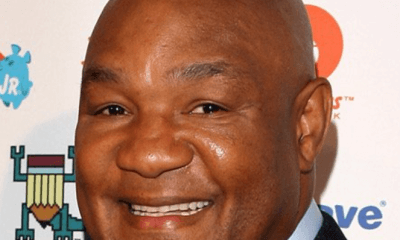
 Featured Articles4 weeks ago
Featured Articles4 weeks agoBernard Fernandez Reflects on His Special Bond with George Foreman
-
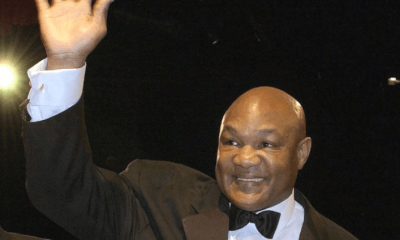
 Featured Articles4 weeks ago
Featured Articles4 weeks agoA Paean to George Foreman (1949-2025), Architect of an Amazing Second Act
-
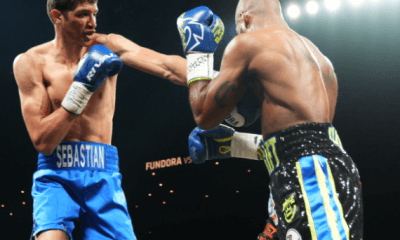
 Featured Articles4 weeks ago
Featured Articles4 weeks agoSebastian Fundora TKOs Chordale Booker in Las Vegas
-
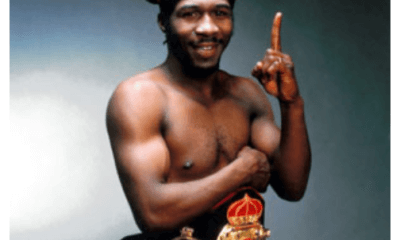
 Featured Articles3 weeks ago
Featured Articles3 weeks agoBoxing Odds and Ends: The Wacky and Sad World of Livingstone Bramble and More
-
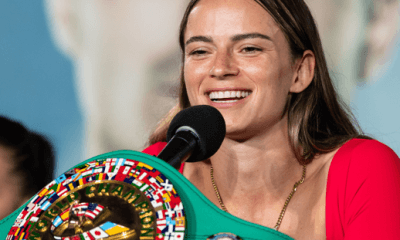
 Featured Articles4 weeks ago
Featured Articles4 weeks agoAvila Perspective, Chap. 318: Aussie Action, Vegas and More
-
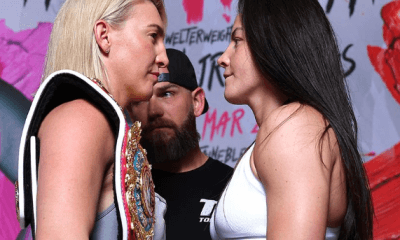
 Featured Articles3 weeks ago
Featured Articles3 weeks agoAvila Perspective, Chap. 319: Rematches in Las Vegas, Cancun and More
-

 Featured Articles3 weeks ago
Featured Articles3 weeks agoRingside at the Fontainebleau where Mikaela Mayer Won her Rematch with Sandy Ryan
-
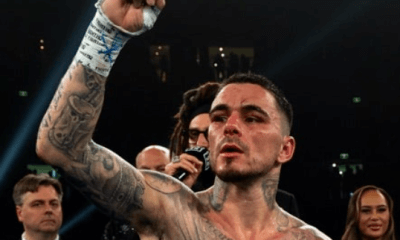
 Featured Articles4 weeks ago
Featured Articles4 weeks agoResults and Recaps from Sydney where George Kambosos Upended Late Sub Jake Wyllie

















